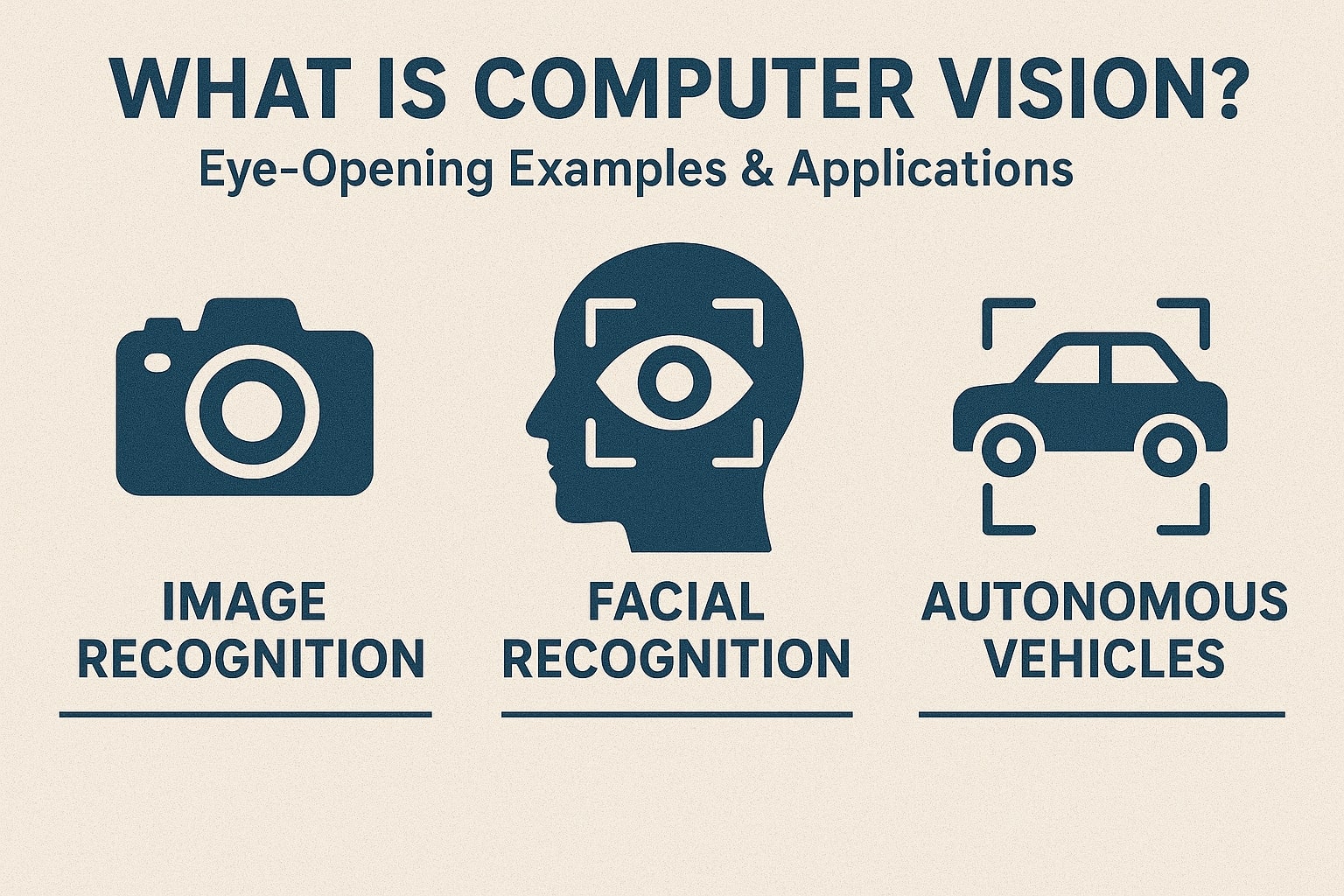Computer Vision is the field of AI that enables machines to “see,” interpret, and understand the visual world. By processing digital images and videos, computers can identify objects, classify them, and react to what they see. This technology is transforming industries from healthcare to automotive. Here’s how it works and where you’ll find it.
What is Computer Vision?
Computer Vision (CV) is an interdisciplinary scientific field that trains computers to interpret and derive meaningful information from visual data—images and videos. The goal is to replicate the complexity of human vision and go beyond it in speed and accuracy.
How Does Computer Vision Work? A Simplified View
CV systems typically involve a series of steps to understand an image:
- 1. Image Acquisition: Capturing an image or video via cameras, sensors, etc.
- 2. Pre-processing: Improving the image data by reducing noise, converting to grayscale, or enhancing contrast to prepare it for analysis.
- 3. Feature Extraction: Identifying interesting parts of the image, such as edges, corners, textures, or colors.
- 4. Detection/Segmentation: Isolating objects or areas of interest within the image.
- 5. Recognition/Classification: The core AI step. Using machine learning models (especially Convolutional Neural Networks) to label the object (e.g., “cat,” “car,” “tree”).
- 6. Understanding: Interpreting the scene, including the relationships between objects and the context.
Fascinating Real-World Applications of Computer Vision
- Facial Recognition: Used to unlock your phone (Face ID), tag friends on social media, and enhance security systems.
- Self-Driving Cars: CV is critical for identifying pedestrians, reading road signs, detecting other vehicles, and navigating lanes.
- Medical Image Analysis: Helps radiologists detect diseases like cancer more accurately by analyzing X-rays, MRIs, and CT scans.
- Retail: Automated checkout systems (like Amazon Go), inventory management, and analyzing customer behavior in stores.
- Augmented Reality (AR): Filters on Snapchat and Instagram use CV to track facial features and overlay digital objects in the real world.
- Manufacturing & Quality Control: Automatically inspecting products on assembly lines for defects.
The Future of Computer Vision
The future is moving towards more sophisticated scene understanding, 3D vision, and real-time video analysis. We can expect CV to become more integrated with other AI fields like NLP, leading to systems that can not only see an image but also describe it in detail and answer questions about it.
Computer vision is giving machines the power of sight, opening up a new frontier of automation and insight that was once the domain of science fiction.
Learn the core technology: Computer Vision is powered by neural networks. Discover how they work.
